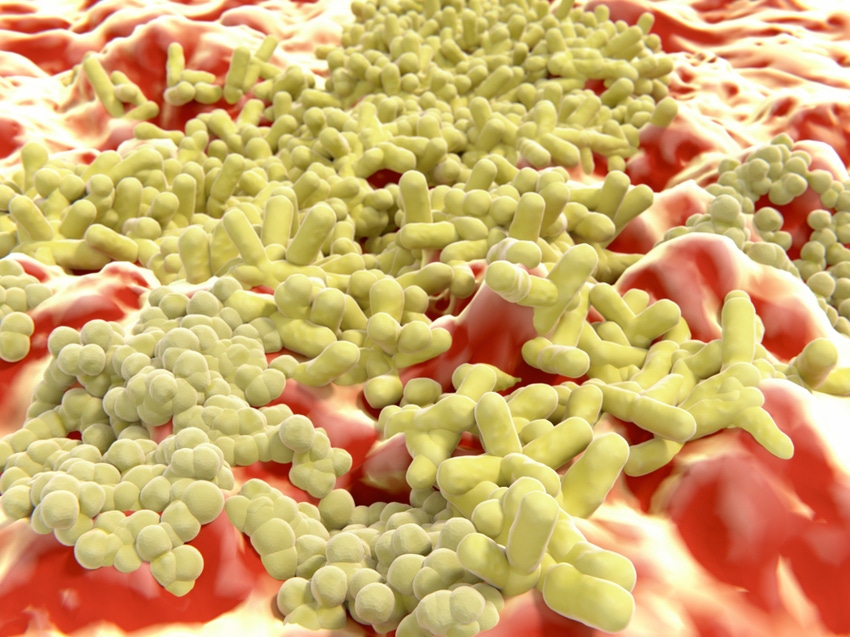Tests indicate F6 is less susceptible to bacterial resistance.
June 18, 2018

Purdue University researchers have identified a new compound that, in preliminary testing, has shown itself to be as effective as antibiotics approved by the Food & Drug Administration to treat life-threatening infections while also appearing to be less susceptible to bacterial resistance.
The compound, called F6, has been potent against antibiotic-resistant pathogens such as methicillin-resistant Staphylococcus aureus (MRSA), which is often found in hospitals and other health care settings, and vancomycin-resistant S. aureus (VRSA), with vancomycin long considered to be a drug of last resort. The compound was tested against clinical isolates.
“This is very exciting,” said Herman Sintim, drug discovery professor in Purdue’s department of chemistry. “We are not the first to report of a new molecular entity that killed these drug-resistant pathogens, but what is unique about the compound that we found is that when we tried to generate resistance in the lab, we couldn't.”
The results of the study were published in the European Journal of Medicinal Chemistry.
Pharmaceutical companies have been reluctant to invest in antibiotics because it typically costs millions of dollars to develop a drug, and the probability of bacterial resistance is high, Purdue said.
Purdue researchers identified F6 by screening a chemical library for compounds with antibacterial activity. They tried to force bacterial resistance on F6, performing experiments to evaluate the ability of MRSA USA400 to develop resistance to F6 in vitro.
“The idea is that if you keep adding increasing concentrations to bacteria and then you keep regrowing the bacteria, after so many cycles, you are going to develop resistance,” Sintim said. “Scientists do this to figure out whether whatever they have created develops resistance quickly.”
The minimal inhibitory concentration remained unchanged for F6 over nine passages and doubled on the10th passage. It then remained unchanged up to the 14th passage during a two-week period. By comparison, the minimal inhibitory concentration of the antibiotic ciprofloxacin tripled after the eighth passage and continued to rapidly increase to more than 2,000-fold by the 14th passage.
“We are not saying there will never be resistance to the F6 molecule or analogs thereof. What we are saying is that, 'Here is a new molecule that works,' and when we try to force resistance, we couldn't generate resistance,” Sintim said.
F6, which is nontoxic to humans and other mammals, works against the group of Gram-positive bacteria, but not against Gram-negative bacteria. F6 was effective against MRSA, VRSA, Enterococcus faecalis that lives in the human gut, vancomycin-resistant enterococcus and Listeria monocytogenes, which is often associated with unpasteurized dairy products.
Testing on mice also indicated F6 was as effective as fusidic acid in treating a wound infected with MRSA, further confirming its potent antibacterial effect, Purdue said.
The Purdue researchers will now begin to make derivatives of F6 to see if they might be even more effective. They are working with the Purdue Office of Technology Commercialization to look for partners to help further develop this exciting new molecular entity.
You May Also Like
.png?width=300&auto=webp&quality=80&disable=upscale)
.png?width=300&auto=webp&quality=80&disable=upscale)

